systemic racism

IN 1991, FOUR Los Angeles police officers beat Rodney King, a 25-year-old African American man, nearly to death. It was caught on video. All the officers were acquitted of assault with a deadly weapon. The acquittals were followed by six days of rebellion with more than 50 associated deaths. At that time, I and many other white Christians fixated on our desire to see “peace” restored. Even in the face of graphic police brutality, I was unable to see the pernicious racial injustice that created the context for the riots. The white Christianity of my upbringing did not equip me with a biblical lens through which to discern the truth about racial injustice in the U.S. It would be nearly a full decade before I could finally begin to perceive it.
Nevertheless, in light of the role white Christian nationalists played in the Jan.6 riot, the number of pastors who preach against Black Lives Matter and critical race theory, and the deafening silence and stubborn inaction of many white Christians in the face of explicit cries for racial justice, I have to ask: Will this generation of white American Christians be just another in the long line to embolden racial injustice?
Where do we turn to find hope, inspiration, and guidance to help white Christians finally commit to our God-given vocation to do justice instead of holding tightly to our idolatrous commitment to white supremacy? I look to the little-known biblical prophet Zechariah and how he called a generation returned from exile to live out God’s call to do justice.
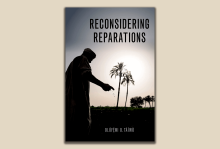
IN A FORMER job, I traveled to farms scattered around the world searching for coffee beans to make espresso drinks for Western consumption. I became intimately aware of the complex origins of something as seemingly simple as a cup of coffee and witnessed firsthand the currents of a worldwide distribution system that transfers surplus value from the Global South to the Global North.
In Reconsidering Reparations, Olúfémi Táíwò, an assistant professor of philosophy at Georgetown University, describes the history of this system and how it contextualizes discussion of reparations. Colonialism and trans-Atlantic slavery, what he terms the “global racial empire,” created the world and the complex web of social and economic relations we inhabit today. This system has resulted in an accumulation of safety, education, food, health care, and opportunity in Western countries and insecurity and precarity in the Global South. Táíwò argues this history is “not simply a point of comparison to the present. It is a way to map the currents that engulf us in the present.”
Unsurprisingly, these currents extend to the vulnerabilities occasioned by climate change. The metrics most equated with human flourishing—life expectancy, maternal mortality rates, dietary adequacy, literacy rates, sanitation accessibility, and “government effectiveness” (civil liberties, political rights, and governing accountability)—are significantly worsened by a country’s history of colonization and intensified by climate change. Climate justice and racial justice turn out to be the same project, in response to the same political history of global racial empire.

MY DREAMS ARE dominated by repairing the harms of mass incarceration. I dream of a future that includes decarceration and prison closures, one where Black people aren’t at risk of fatal police interactions. I dream of a future for Black people where public safety isn’t defined by arrests and lengthy prison terms. My Black future dreams are radical in the context of America. If my dreams were currently possible, the anti-Black through line that characterizes the nation’s public safety strategy would look a lot different.
Violent crime rates tripled between 1965 and 1990 in the United States, Germany, and Finland. Yet, countries have the policies and prison populations they choose. German politicians chose to hold the imprisonment rate flat. Finnish politicians chose to substantially reduce their imprisonment rate. American politicians chose to lengthen prison terms and send more people to prison. When migrant populations, some from the Global South, began moving into Germany and Finland, they were soon overrepresented in the prisons, incarcerated at twice the rate of citizens. Ethnic disparities and anti-Blackness drive incarceration policies everywhere.
Even in the context of increases in crime, the United States could choose another way. Public safety strategies could be centered on undoing the anti-Black practices that dominate criminal legal policies. Solutions must reduce the number of people imprisoned and strengthen communities rather than disappearing Black people from families and loved ones.
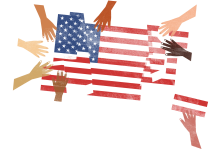
AS WE APPROACH Independence Day, I’m anxious the holiday will be overshadowed by the pitched battles waged around what we teach about our nation’s history, continued assaults on our democracy, and the struggle over how we understand and express patriotism. In the face of these trends and the alarming prominence of white Christian nationalism, it is imperative that we resist destructive forms of patriotism that bleed into nationalism. Instead, we should embrace a redemptive patriotism that celebrates the noble promises the country was built upon, even while we acknowledge and repent for the ways the country has fallen so short of living up to those ideals and extending them to everyone. Nationalism is often rooted in a revisionist and censored telling of history and fueled by a hatred and fear of the “other.” In contrast, a healthy patriotism must always be tied to the project of building a more just and inclusive America. By rededicating ourselves to this cause, the Fourth of July can serve as a day that fosters greater unity and advances shared ideals, rather than one that reinforces our divisions.
Frederick Douglass and the biblical prophet Isaiah lend us seemingly timeless tools to resolve this conundrum. In 1852, nearly a decade before the Civil War, Douglass, formerly enslaved until his escape, was asked to address the citizens of his hometown of Rochester, N.Y., on the nation’s 76th anniversary. This famous speech—“What to the Slave Is the Fourth of July?”—should be required reading for every American.
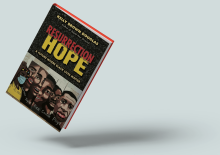
KELLY BROWN DOUGLAS (The Black Christ) is known for widening the circle for disinherited people to identify with the Black Jesus of her mentor, James H. Cone. In Resurrection Hope, Douglas wrestles with how ongoing Black suffering challenges her faith, sparked by questions her adult son asks when yet another Black person is murdered by police or violently assaulted. “How long do we have to wait for the justice of God?” Douglas’ son asks. “I get it, that Christ is Black, but that doesn’t seem to be helping us right now.”
Her son’s visceral theodicy questions cause Douglas to wonder if her Christology of a Black Jesus who identifies with those experiencing “crucifying realities” is enough.
Douglas digs into history and details anti-Black narratives and white supremacy in the very architecture of Christian theology. She traces the development of what W.E.B. Du Bois called “the white gaze.” This white way of knowing “fosters death for Black bodies” by both overt means and the insidious silence of “good white people.”

A FEW MONTHS into the pandemic, as the country started to notice the uptick in hate crimes against Asian Americans, caring friends checked in to ask, “Are you okay?” I found myself metaphorically turning around to see if they were talking to someone behind me. I was so unused to having my ethnic vulnerability seen and named.
Then a year ago, in March 2021, a young white man killed six Asian women in spas around Atlanta. This time it was clearer—I was not okay. My mother is a massage therapist and has worked in spas in Florida, where the killer was headed when police apprehended him. This time, I could say with more certainty, “This hurts me.”
In the blooming of Asian American consciousness since that event, however, I’ve continued to wonder how much of what happens to other AAPI (Asian Americans and Pacific Islanders) folks around the country, and back through time, is mine to own. Writer Jay Caspian Kang argues that Asian Americans who came to this country after the 1965 Hart-Celler Immigration Act have little to no connection with earlier generations of Asian Americans, whose circumstances were vastly different. Between the lines, Kang is saying to us later waves of immigrants, “That’s not your history.”

DESPITE THE FACT that critical race theory (CRT) is a complicated academic theory that some scholars use to examine disproportionate outcomes in the criminal justice system, school board meetings across the U.S. have erupted in passionate debates with parents demanding it be banned.
Ironically, CRT cannot be taught to children because it is not age appropriate for K-12—just as we would not teach advanced nuclear physics to schoolchildren. Yet the strategic placement by far-right activists of a narrative that CRT has crept into K-12 education is causing dramatic outbursts of racial anxiety. All this passion could be rerouted to address an important question that everyone cares about: What should children be taught about race and racism in the United States? This conversation, if done well, could actually move our society toward much-needed racial healing.
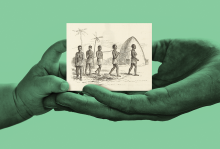
HOW CAN SOMEONE born white take on new flesh when they are old?
This is the question I hear when I read the story of Nicodemus during this Black Lives Matter moment amid the 400-year-long freedom struggle of Black people in the U.S. “How can someone be born when they are old? Surely they cannot enter a second time into their mother’s womb to be born!” (John 3:4). How?
In 1707, my sixth great-grandfather bought my sixth great-grandmother at a slave auction at a French military post in what is now Mobile, Ala. She, later “christened” Thérèse, was a 10-year-old Chitimacha girl. He, Jacques Guedon, was a 17-year-old from Nantes in Brittany who had been recruited into the French colonial navy.
The Chitimacha were the most powerful nation along the Gulf Coast. Prior to contact with Europeans, the Chitimacha lived in a sophisticated matrilineal culture of classes and clans that served them for more than 10,000 years—through disease, war, and climate changes. They vigorously and continually defended their homeland against incursions and slave raids by English, Spanish, and French military, migrants, and missionaries. Today, they are the only tribe in Louisiana to still occupy a portion of their aboriginal homeland.
But a young French-Canadian commander named Bienville was tasked with establishing a fort at Mobile and defending it against the English. He needed to make alliances with native nations—primarily the Chickasaw and Choctaw—or severely weaken those that refused. To accomplish these twin goals and build up his personal wealth by selling Indian slaves, Bienville led his regiment in a night raid on Thérèse’s village. Likely all the adults were massacred. The dozen or so children left alive, including Thérèse, were rounded up for sale. It was a minor skirmish in France’s half-hearted attempt to establish and maintain extractive trade routes for maximum profit and minimum outlay, an expedient conquest to boost political standing and pay off debts.
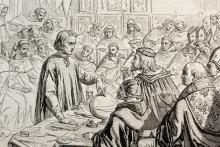
“WHITE CHRISTIANITY IN America was born in heresy.”
This statement was made by Yale University theologian Eboni Marshall Turman last year before a large gathering of religion scholars. Marshall Turman, a formidable leader in African American theology, did not explain her meaning. In that room, she did not need to do so.
But as I heard her, I thought dolefully about how very long it took me as a white American Christian ethicist to be ready to engage or even to understand such a statement. I wondered doubtfully how many white American Christians today would be prepared to discuss it rationally. After all, part of what is so deeply wrong with white evangelicalism has to do with race. If what comes “after evangelicalism” does not address our racism at its roots, we shouldn’t bother.
To say that white Christianity in America was born in heresy is to make a theological statement about racism prior to any moral evaluation. It is to suggest that our local racism problem is ultimately rooted in heresy, a violation of central tenets of Christian doctrine. It is also to say that this heresy was present from the birth of American Christianity. There was no original innocence—the heresy and its resulting sins were there from the beginning.
This begs the question of whether the ultimate historical source of such heresy can be identified. It seems to me that a compelling starting point is 15th century Europe as it began conquering and colonizing the world in the name of Christ. The story begins with those first imperial powers, Spain and Portugal, but soon after extends to Britain and other European colonial nations, including Holland, France, Belgium, and so on. These were empire-building nations on the cusp of their grand adventures. They confidently believed themselves to be the center of the world, superior to all other cultures, entitled to conquer and colonize, and in doing so actively advancing God’s will. The European powers believed this for many centuries. Some would say that they, and their descendants, believe it still.
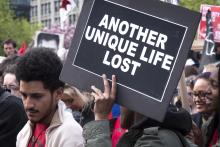
I don’t need to remind you, but I will, that this is the mentality of slave owners — the muscle memory of oppression that beats in American hearts still, in quiet and loud ways, and leads the systems of this nation to marginalize those who look different than the most privileged.
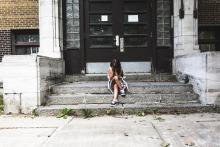
“We’ve come to our nation’s capital to cash a check,” Martin Luther King, Jr. said in the “I Have a Dream” speech. The Founders of the United States had signed a metaphorical promissory note that guaranteed equal rights for all people, he said.
“It is obvious today that America has defaulted on this promissory note insofar as her citizens of color are concerned,” King concluded.

How would you feel if you realized your children’s water was being poisoned, and your government didn’t seem to care? That’s the story of the parents of 8,000 mostly poor and black children in Flint, Mich., (which means most all of the children in urban Flint) that has finally hit our media front pages. The evening news I am watching as I write warns the parents of Flint not to bathe their young children in city water.
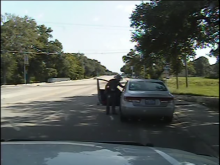
Bland was found dead in a jail cell after being arrested during a traffic stop, when she was pulled over for changing lanes without signaling. Police claim that her death was a suicide, but friends and family don’t believe it.

I walked through ash and glass as neighbors and community members swept up the remnants of our neighborhood. The night before, flames touched sky in all corners of our city as news and police helicopters hovered overhead. The city was Los Angeles. The year was 1992, and it was the third day after the police who beat Rodney King were acquitted by an overwhelmingly white jury in Simi Valley.
That was the day I was introduced to the words of Jeremiah 29:7: “But seek the peace of the city where I have sent you into exile, and pray to the Lord on its behalf, for in its peace you will find your peace.”
On Monday, Maryland Gov. Larry Hogan called in the National Guard and Baltimore Mayor Stephanie Rawlings-Blake declared a citywide curfew to quell violence that erupted in Monument City following the funeral of 25-year-old Freddie Gray. Gray died a week after sustaining a nearly severed spinal cord after being detained by police on April 12. The reason for the stop? Gray ran after making eye contact with police. An investigation is ongoing — while the people of Baltimore and beyond demand justice.
The images of fires rising over the Baltimore landscape were eerie, as it was only a few months ago that the nation sat glued to television sets watching the small town of Ferguson, Mo., erupt. And I fear we are becoming numb to it. We turn the TV on to watch our favorite reality show. We see chanting, running black people, and we think: again? Then we turn back to The Voice.

The three of us put our cups of coffee on the counter and reached into our pockets for our wallets. The check-out clerk paid no attention to any of us. He seemed to be staring at someone or something in the back of the store.
“We’re ready to pay,” one of us said.
The clerk kept looking at the back of the store. A few seconds went by before he told us what had his attention.
“I’m watching that boy over there to make sure he don’t steal nothing,” the clerk said.
The three of us looked at the back of the store and realized the clerk was talking about our co-worker.
Four of us were carpooling across Florida on a work assignment several years ago. It took several hours to cross the state. We stopped at a place called Yeehaw Junction off Route 60 to use the restroom and get some coffee.
The three of us at the check-out counter were white, like the clerk. The co-worker accompanying us was black. The clerk assumed that because the three of us were white, we would understand and agree with his attitudes and assumptions about our co-worker – that he was dishonest because of the color of his skin. Needed to be watched. Couldn’t be trusted. Too dangerous to let out of his sight.
Editor’s Note: On Monday night, it was announced that a grand jury in St. Louis County found no probable cause to indict Ferguson, Mo., police officer Darren Wilson on any of five possible counts. Throughout the country, protests have erupted. For this week’s edition of the Weekly Wrap, we wanted to offer you the 10 most important things you should see, read, digest to understand the situation. We pray for peace.
1. Letter From Birmingham Jail
by Martin Luther King Jr. Far more relevant than it should be. Print it out. Write on it. Pray through it. "In the midst of blatant injustices inflicted upon the Negro, I have watched white churchmen stand on the sideline and mouth pious irrelevancies and sanctimonious trivialities."
2. PHOTOS: Scenes From Ferguson — and Beyond
Slate compiled these chilling shots from protests in Ferguson, New York City, Los Angeles, Washington, D.C., and more.
3. A Sad Night for America
“It is time to right the unacceptable wrong of black lives being worth less than white lives in our criminal justice system." our criminal justice system."
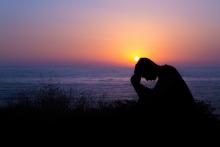
“If my people, which are called by my name, shall humble themselves, and pray, and seek my face, and turn from their wicked ways; then will I hear from heaven, and will forgive their sin, and will heal their land.” —2 Chronicles 7:14
Confession and repentance are messy and painful, and they don’t come natural to us. Our human heart is in a natural state of denial. Without an external agent, God, we are unable to recognize our prejudices, offenses, and sins.
In the previous text God speaks to God’s people, those whom God claims as God’s own. We belong to the Creator and to each other. That means that regardless of how we perceive others, and regardless of how others perceive us, bonds that can’t be broken tied us up. The relationship we share is held together by the very identity of God. Mother Teresa reminded us “we have forgotten that we belong to each other — that man, that woman, that child is my brother or my sister.”
It is necessary that we understand that this belonging is mutual. I belong to you and you belong to me. There is no escape; we can’t change this relationship. It is only when I recognize others and welcome them into my life that the fullness of God’s identity in me is revealed. No one is an outsider. No one should be left out at the door of my heart; to do so is to deny my God-given identity.
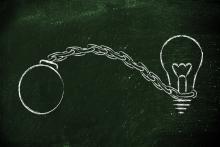
September is often associated with the celebratory beginning of a new school year. It’s a time of hopeful anticipation for students, parents, and teachers filled with new school supplies and new friends.
In many communities, however, the beginning of the school year is a cause for concern and anxiety.
Instead of hallways filled with artwork and sports trophies, many students will walk into prison-like environments complete with metal detectors, and the presence of police and armed security officers. These officers have more than a chilling effect. They also have the authority to arrest students, often for minor misbehavior. When you couple the harshness of the school environment with zero tolerance policies that criminalize children’s non-violent infractions like being late to class, violating a dress code, or even chewing gum, one can begin to see the school discipline crisis.
The patchwork of overly harsh disciplinary policies that funnel children directly from the classroom to the juvenile justice system is referred to as the school-to-prison pipeline. In schools across America, students, especially students of color, who should be sent to the guidance counselor to find out what’s really wrong end up at the police station. These policies are expensive, unjust, and ineffective. They also lower academic achievement, lead to dropout, and do little to make schools safer.
Even more troubling, we find that the rules are different for children of color, who are punished more often and more severely than white students for the same offenses. These students are not behaving any worse than others, but they are disciplined at a higher rate because of racial bias. These same patterns we see in schools are also playing out in the criminal justice system: African Americans are imprisoned at higher rates and given more severe sentences than whites for the same offenses.
The school-to-prison pipeline is a moral and racial justice crisis. Solving the problem will require an all-hands-on-deck solution.
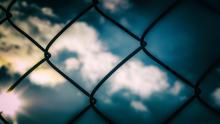
I walked across the school yard and through the ominous painted doors of St. Athanasius Elementary School for the first time. My mother and I had walked hand in hand the long city block from home to the school, across the school yard, through the entrance, down the hallway, heels now echoing against linoleum and lockers as the smell of chalk and mimeographed copies wafted from each classroom we passed.
We entered my second-grade classroom where I was greeted by the teacher who told me to take my seat four heads from the front. That seat was my second home for half of every day for a year.
I had high hopes for second grade. At the very least, I hoped it would be safe. It wasn’t.
The girl who sat behind me demanded 25 cents per day to be my friend — or else. But worse, the white woman charged with teaching our classroom full of African-American children ruled us as if we were in her military camp … or worse… prison.
My teacher once punched me in the back because I forgot to hand in an assignment — in second grade.
Now take that single act of aggression and magnify it: a punch in the back becomes a suspension, an expulsion, or an arrest. Then systematize it. Call it a “Zero Tolerance” policy and spread it across 90 percent of schools in the United States. Then apply the policy inequitably, such that African-American children are punished at higher rates and more severely than white children. That is what happened when the culture of severe punishment promoted by the Tough on Crime movement permeated education systems throughout the 1990s.

They say a watched pot never boils. But that's not entirely true. Of course a watched pot boils—it's just that intently watching a pot of water reach 212 degrees Fahrenheit is not an incredibly exciting way to spend your time. And so most people get bored or distracted and end up leaving before it ever reaches the boiling point.
Systemic racism is like a heat source that keeps a pot of water simmering at a constant 211 degrees. Extremely hot, but not quite boiling. Every once in a while the heat gets turned up just a tad—like when a frightened white police officer in Ferguson, Mo., shoots a young unarmed black man while his hands are in the air. Or a group of ignorant, overzealous college students from Oklahoma State University create a banner for a football game that makes light of an act of genocide committed against Native Americans by the United States government.
And then the water starts to boil.
Protests are organized. Twitter goes ablaze. Op-eds are written. Civil rights leaders are given the microphone.
And the temperature is brought back down to 211 degrees.